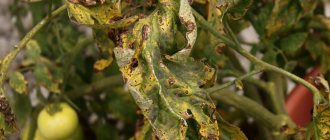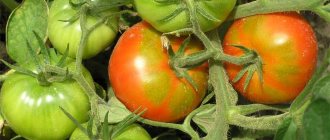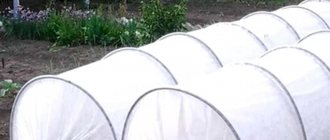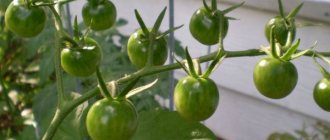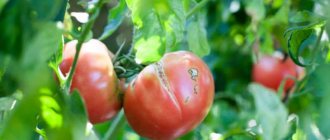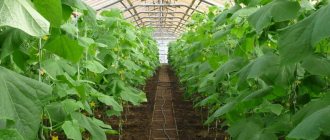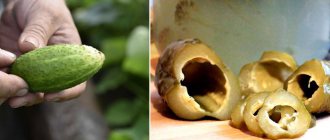Tomatoes quite often lack nutrients, light and moisture. Under unfavorable environmental conditions, their growth slows down. Is it possible to stimulate the growth of tomatoes so that they continue to grow and bear fruit?
Growing tomatoes is always fraught with certain difficulties, since this crop is quite fastidious and requires constant attention. The first problems are usually associated with the fact that the tomatoes begin to lag in growth. If you notice signs of slowing growth, then it’s time to move on to measures that will help restore strength to weakened plants and give you the desired harvest.
Tomatoes need fertilizing that contains iron, manganese, copper, boron, zinc, molybdenum, iodine, selenium and cobalt
Why tomatoes don't grow well
Typically, slower growth of tomatoes is associated with nitrogen deficiency. If there is a shortage of this basic nutrient, the growth of apical and lateral shoots stops, and young leaves begin to turn yellow. If there are not enough sulfur compounds, the stem becomes thinner and hardens, remaining dwarf.
For tomatoes grown in a greenhouse, it is important to maintain the required temperature and humidity, as well as the feeding regime. The slowdown in the growth of tomatoes in a greenhouse occurs due to the following reasons:
- too high or, conversely, too low air temperature in the greenhouse;
- increased or insufficient air humidity;
- high or low soil moisture;
- unbalanced composition of fertilizers.
Eliminating the first three reasons is quite easy. In particular, during the pollination period, the air temperature in the greenhouse should be between 24-28°C. In cloudy weather it should not exceed 20-22°C. At night the air temperature should not fall below 18°C. Accordingly, at an air temperature of about 32°C, pollen loses its quality, and at an air temperature below 15°C, pollination stops altogether.
The plant needs to be provided with intensive nutrition in mid-summer, during the period of fruit formation.
The optimal level of air humidity that allows the formation of ovaries is 65%. However, the greenhouse should be ventilated regularly. Soil humidity should be in the range of 70-75%, so it is necessary to provide the plants with regular watering with settled water at a temperature of 24-26°C.
The situation is more complicated with fertilizing, although they are often the main reasons for the slowdown in the growth of tomatoes.
Some features
Options for planting tomatoes.
Organizing proper nutrition for tomatoes, when applying nitrogen fertilizers, can significantly increase the yield. In this case, it is very important to comply with the norm, since excess nitrogen at a certain stage provokes increased growth of leaves and stems, while the fruits remain very small and weak. The fact that the plant has been improperly fertilized can be guessed by changes in the flowers; the petals become larger in size, while the stamen cone, on the contrary, remains very small.
Mistakes when feeding very often lead to a decrease in yield, especially if there is extreme heat. With a lack of carbon nutrition, plants are weakened and unstable even to one-time changes in temperature. For this reason, greenhouse air should be saturated with carbon. How to do it? A container is placed on the territory of the greenhouse, which should be filled halfway with manure or grass, and then topped up with water. This is especially important if the soil in the greenhouse is not sufficiently fertilized.
How to feed tomato seedlings for good growth
You should start fertilizing tomatoes at the earliest stages, even before sowing the seeds for seedlings. Among the “home” remedies, you can use aloe juice . It is a natural growth stimulator that can be easily obtained at home. Cut off the large lower leaves of the aloe, put them in the refrigerator for 12 hours, and then squeeze out the juice. Place the seeds in aloe juice for a day and then leave them to germinate in a moist environment without washing off the juice.
The first feeding of seedlings should be carried out after the appearance of the first true leaf. As the sprout develops, it switches to feeding using its own root system, since the supply of nutrients from the seed has already been exhausted. At this time, nitrogen and phosphorus are required for the successful growth of tomatoes. Therefore, the following drugs are used: Uniflor-rost, Sortvorin, Kemira-lux. These drugs are used in the form of solutions, adding 1 tsp to 5 liters of water. composition.
At home, you can prepare a light pink solution of potassium permanganate and pour it onto the soil for seedlings. This procedure will disinfect the soil and protect plants from many diseases.
By the time of picking, the tomato sprouts have already become quite tall, their root system is actively developing, and second, “real” leaves appear on the sprouts. After picking, the plants should be fed with Uniflor-bud solution. To do this, dilute 1 tsp in 2 liters of water. drug.
Among vegetable growers, one of the most popular remedies is Zircon. Thanks to its action, seed germination increases and the flowering of future bushes accelerates. On average, the growth and development of tomatoes accelerates by 5-10 days. 1 ml of Zircon contains 40 drops, 0.1 ml, respectively, 4 drops. Spraying of plants during the growing season is carried out using a working solution - 1 ml of the drug per 10 liters of water or 0.1 ml of the drug per 1 liter of water. The prepared solution should be stored in a dark place for no more than a day.
The main thing to remember when preparing nutrient solutions is that tomatoes should not be overfed and fertilizer should not be applied thoughtlessly.
A few words about beneficial properties
South America is considered to be the birthplace of this vegetable. To this day, many wild tomato species have survived in those places. In Russia, tomatoes became known only in the middle of the eighteenth century.
Due to its many beneficial qualities, this culture is considered one of the most beneficial for the human body. The vegetable contains a wide variety of vitamins and microelements:
- Folic acid;
- Nicotinic acid;
- Starch;
- Elements iron and iodine;
- Vitamins of groups B and C and others.
However, among all these elements, lycopene provides the greatest benefit. This antioxidant takes an active part in the destruction of cancer cells. It is because of the presence of this substance in tomatoes that they have a red color.
In addition to the usual consumption, these vegetables are also used to treat certain diseases. For example, using tomato juice, you can get rid of constipation by drinking it every day after meals.
The course of such therapy should continue for at least two weeks. They also help well with atherosclerosis. People with this disease are advised to add tomatoes to their diet daily (the more, the better).
In addition to all of the above, cosmetologists have also found use for tomatoes. Tomato juice is used as a tonic face mask. The mixture is applied to clean skin for 15-20 minutes and then washed off with water.
How to feed tomato seedlings to make them plump
Two weeks after a successful picking, you should take care of the future abundant harvest. To do this, at home you should organize no more than three feedings with an interval of 14 days according to one of the following recipes:
- dissolve 20 g of superphosphate, 10 g of urea and 15 g of potassium chloride in 10 liters of water;
- add 1 tbsp to 2 liters of warm water. ash without a slide and let it brew for 24 hours. Strain the solution before use so that pieces of ash do not fall on the plants;
- Fill a 3-liter container 2/3 full with eggshells and fill with water. Let the mixture brew for 3 days, and then dilute the infusion with water in a ratio of 1:3.
Preventive measures
To make tomatoes less susceptible to attack by diseases and pests, the following preventive measures need to be taken:
- monitor the predecessors of the crop and do not plant tomatoes twice in the same place;
- dig up the bed before frost (this will get rid of larvae and spores);
- remove all plant debris from the garden bed;
- disinfect the soil before planting;
- disinfect the greenhouse in spring and autumn;
- update the top layer of soil periodically;
- carry out routine treatment of the crop with Bayleton, Actellik, Farmaid-3.
We recommend reading about how to properly treat tomatoes with Fitosporin.
How to feed tomato seedlings in the ground
Recipes for further fertilizing will depend on where you are planting the seedlings - in open ground or in a greenhouse. Let's look at the most effective fertilizers for tomatoes planted in the ground:
- when planting seedlings, place a handful of compost or humus, a little wood ash and 1 tsp in the hole. superphosphate;
- do not throw away the bread crumbs throughout the year and dry them in the oven. Soak the dried remains in warm water and leave overnight. While loosening the soil, add the resulting pulp under the roots. This enhances root formation, increases the endurance and productivity of tomatoes;
- to quickly ripen fruits, use a tincture of the following ingredients: dilute 1 tbsp. superphosphate in a glass of water and let it brew for 48 hours. After this, dilute the infusion with 10 liters of water and stir. After spraying, the tomato leaves will darken slightly, photosynthesis processes will become more active, and the fruits will ripen earlier than usual;
- dissolve 10 drops of iodine in 1 liter of milk or whey, dilute the composition in 9 liters of water and mix. Water the tomatoes at the rate of 2 liters of mixture per bush;
- take 1 tsp. boric acid, copper sulfate, potassium magnesia and add a little potassium permanganate to them (on the tip of a knife). Then grate a piece of laundry soap and dissolve everything in 10 liters of water. Spray the bushes evenly 1-2 times per season;
- prepare 0.5 liters of chicken manure infusion, 1 tbsp. potassium sulfate and 2 tbsp. superphosphate. Then dilute the contents in 10 liters of water. First, it is better to dissolve the superphosphate and let it sit for 24 hours, and then add the rest of the ingredients. Apply at least 1 liter of this solution under each bush;
- Every two weeks, feed the tomatoes with ash infusion. Pour 1 cup of ash into 10 liters of water and let it brew for 2-3 hours. Apply 1.5-2 liters of product under each bush.
If flowers begin to fall off in hot weather, it is recommended to spray with a solution of boric acid at the rate of 5 g per 10 liters of water.
Tips and tricks
Proper and timely care is the key to a rich harvest. Gardeners with many years of experience recommend not to water the plants in the first days of planting, but to do so only after ten days.
You can get a bountiful harvest by maintaining optimal temperatures. To do this, the greenhouse is constantly ventilated. This is done two hours after watering. On the fourth day after planting the seedlings, the tomatoes are tied up. To eliminate plant diseases, they need to be pinched. Such actions will prevent damage to tall bushes that sag under the weight of their weight.
Attention! Linear or frame trellises are excellent for gartering.
How to feed tomato seedlings in a greenhouse
Fertilizing tomatoes in a greenhouse is somewhat different from applying fertilizers in open ground. Usually 2-3 feedings per season are enough, but if you notice that the tomatoes are not growing well, you can carry out additional stimulation every 10-12 days. For example, one of the following compositions:
- Apply the first fertilizing 2 weeks after transplanting the plant. 1 tbsp. dilute urea in 10 liters of water. Apply 1-2 liters of the composition under each young bush - it will help them grow green mass. Also place a few peas under each bush. In this case, during each watering, nitrogen will gradually be absorbed by the soil and supplied to the roots;
- Slurry or dry manure diluted with water in a ratio of 1:10 is best suited as organic products. You can also use chicken manure at the rate of 200-250 g per 10 liters of water. The resulting solution is infused for 24 hours, and then watered at the roots of the tomatoes at the rate of 2-3 liters per plant;
- The growth and development of plants in a greenhouse is beneficially affected by foliar feeding with microelements. You can prepare them yourself. You will need 4 g of manganese sulfate, 2 g of copper sulfate, the same amount of boric acid and zinc sulfate. All substances are diluted in 10 liters of water and sprayed on plants in the evening or in cloudy weather to avoid burning the leaves. It is necessary to fertilize no more than once a month;
- take 1 tbsp. mineral fertilizer Humat and mix with 10 liters of water. Add 1 tbsp. complex fertilizer containing nitrogen, potassium, copper, manganese and molybdenum. Apply about 0.5 liters of solution under each bush;
- During the period of blooming of the third and fourth flower clusters, feed the tomatoes with potassium humate (1 tbsp per 10 liters of water). For 1 sq.m. in greenhouses, up to 5 liters of the composition should be added;
- The last fertilizing can be done when green tomatoes have already appeared on the bushes. It allows you to speed up the process of fruit ripening. To prepare it, dilute 1 tbsp. superphosphate in 1 liter of water. Infuse the resulting mixture for 24 hours, then mix with 9 liters of water.
From mid-July, all fertilizing, as well as abundant watering of tomatoes, must be stopped.
Pests
Not as often as in greenhouses or garden beds, seedlings are affected by pests. Among them:
- aphid;
- earwig;
- woodlice;
- spider mite.
It happens that pests move to tomatoes from indoor plants when using garden soil. Having noticed cobwebs between the seedlings, dark spots or holes on the leaves, as well as the pests themselves, immediately treat the seedlings with a solution of Actellik or Fitoverm. Treatment with soap solution and ash infusion helps.
Is it difficult to grow healthy and strong tomato seedlings? No, if you follow the basic rules, avoid mistakes and be ready to promptly correct violations. Good luck and great harvests!
Rate this post
Active fruiting period
Fertilizing at this stage will help increase productivity, extend the period of fruit formation and improve the taste of tomatoes. Organic and mineral substances can be used as fertilizer.
To prepare a complex fertilizer, you need to add 40 g of potassium sulfate, ammonium nitrate and superphosphate to a bucket of water. During fruiting of tomatoes, nettle infusion can be used as fertilizer. It contains potassium, iron and magnesium.
To do this, you need to chop 5 kg of nettles and fill it with 10 liters of clean water. Place in a container under a press and leave for 2 weeks. This fertilizer can be used together with humus or infusion of manure.
Prevention
When to feed and what is better? In order not to wait for the ailments described above, spray the bushes with an infusion of onion peels: pour a handful of peels into 1 liter of boiling water, let it brew.
Nettle infusion will help get rid of many problems . As soon as young nettles appear, fill the jar 2/3 of the volume with nettle leaves, fill with warm water, leave for 2-2.5 hours. Spray with the strained solution.
